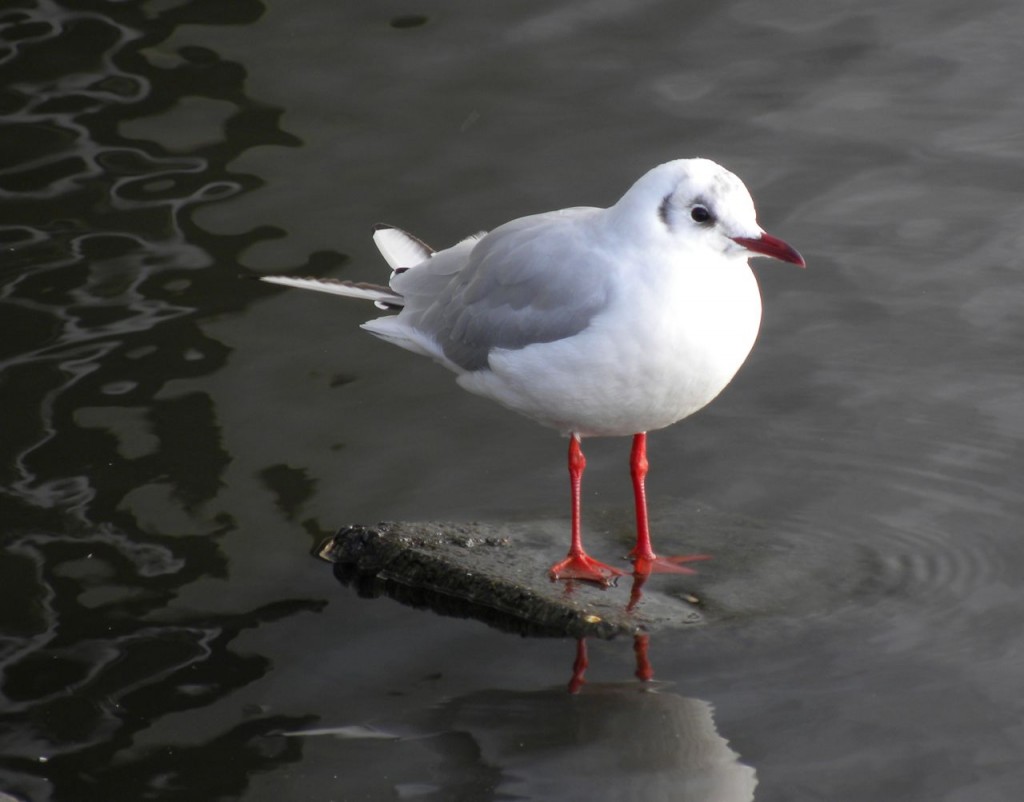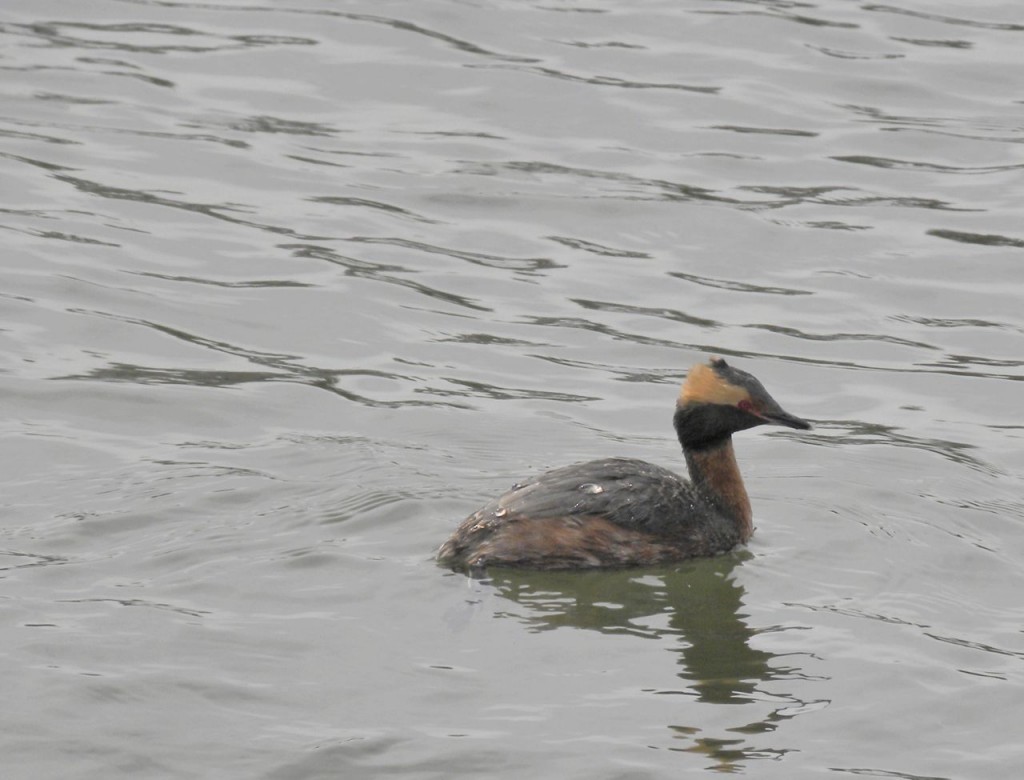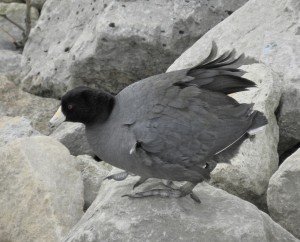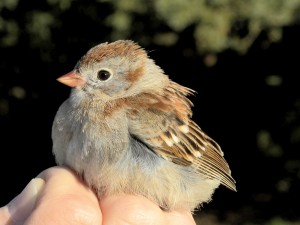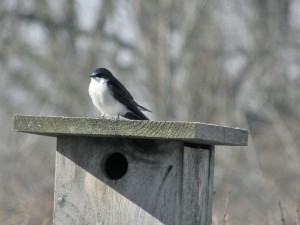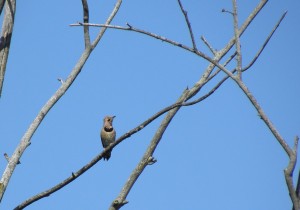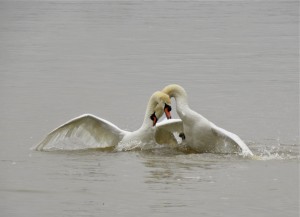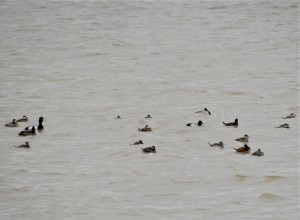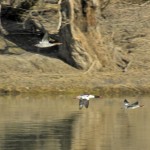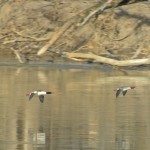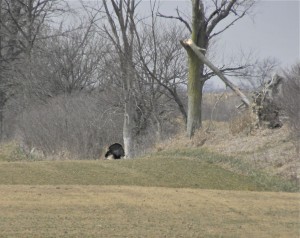19th April 2013. Ruthven Park, Cayuga ON. A flock of Bonaparte’s Gulls enjoying (I suppose) a brief respite from their marathon migration was a refreshing midday surprise. Their spring migration is a long haul, taking them from the Atlantic Coast to the taiga belt of Canada’s sub-Arctic where, uniquely for gulls, they usually nest in trees. They had settled in a flooded field with evidently plenty to eat. Here’s a shot of part of the flock, the group includes some whose heads have taken on their all black breeding plumage, some part way through and others, probably last year’s young, showing no change at all as yet.
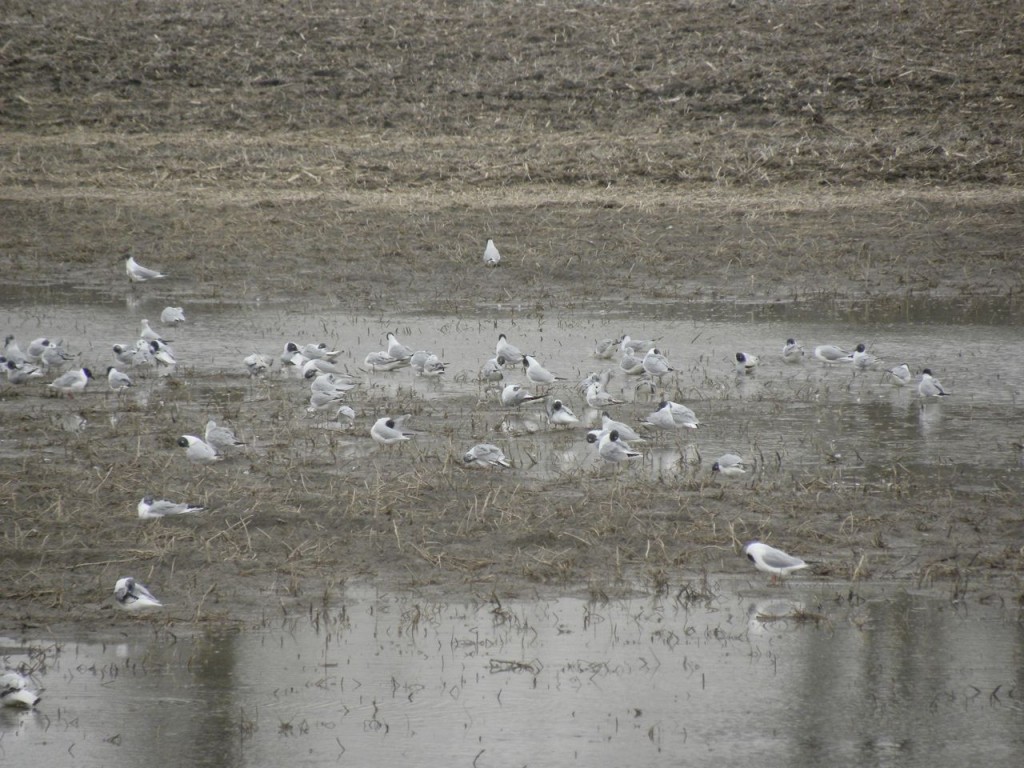
I had just spent the morning, a windy, storm-tossed morning, at the bird observatory. Relatively few birds had been caught in mist nets and banded because the nets billow in high winds, rendering them ineffective. I walked the census route, splattered occasionally by gusty squalls, a time when birds if they could, would be well advised to go indoors. They don’t of course, but they do tend to get out of the weather somehow; who wouldn’t.
Notwithstanding the weather, the walk around included some good sights and sounds including a Pine Warbler or two singing in some large old spruce trees, a young wind-blown Bald Eagle that was chased off by a territorial Red-tailed Hawk and a Turkey that bustled anxiously from its hiding place, ran a dozen paces then flew off; it really needn’t have bothered because when I investigated I found its hiding place to be a masterpiece of cover and deception, it could have stayed there quite unseen forever.
Nesting is high on the agenda and I watched a pair of White-breasted Nuthatches at work making a tree cavity into the perfect nursery. Eastern Phoebes are building a nest too; I saw at least one carrying nest material. They are a remarkably cautious bird in the presence of people; I’d like, but have yet to, get a decent photo of a Phoebe. It’s somewhat complicated by their drab grey/brown plumage, I need to catch one close enough to me, posed perfectly, perched long enough in good light and against an uncluttered backdrop; it doesn’t happen that way too often.
The census round produced 35 species including the first of the year for me Barn Swallow, Northern Rough-winged Swallow and Blue-gray Gnatcatcher. I was all for dubbing Barn Swallow as Bird of the Day until I saw the Bonaparte’s Gulls. They are very similar to Europe’s Black-headed Gull which, since I’m making comparisons is slightly larger and has brighter red feet and a crimson bill. Both species are light, airy fliers and really elegant birds. Growing up in the South of England I paid NO attention to Black-headed Gulls (to my discredit) they were just the basic, default, garbage-scavenging seagull. I know better now. And to illustrate my updated thoughts on Black-headed Gulls, here’s a photo of one taken last September in Iceland, look at how brilliantly crimson the legs and bill are.
